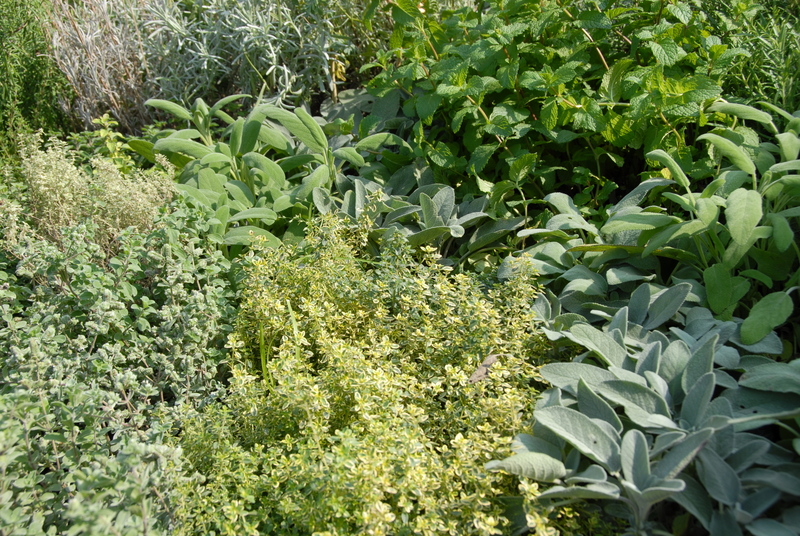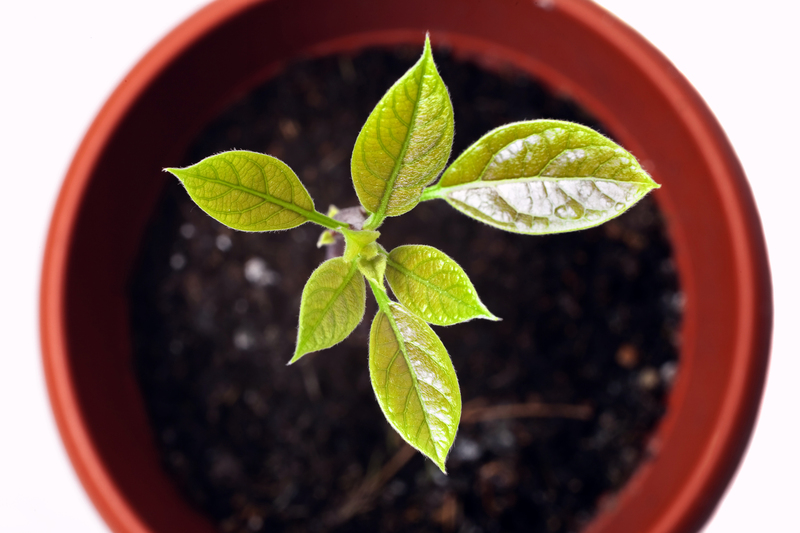Developing a Garden Oasis for Young Minds
Posted on 21/09/2025
Developing a Garden Oasis for Young Minds: Unlocking the Joy of Outdoor Learning
Creating a vibrant garden oasis for children is a powerful way to foster curiosity, imagination, and hands-on knowledge in young learners. By transforming outdoor spaces into engaging, educational environments, parents, schools, and communities can nurture physical, emotional, and intellectual development. In this comprehensive guide, we explore strategies for developing a garden oasis for young minds--with practical insights, design tips, plant recommendations, and project ideas to help you cultivate a space where children thrive.

Why a Garden Oasis for Kids Matters
Today's children spend an increasing amount of time indoors, often disconnected from the natural world. Yet, research shows that regular outdoor experiences are vital for developing healthy bodies, inquisitive minds, and resilient personalities. Here are several reasons building a garden retreat for young learners is essential:
- Stimulates Creativity & Problem-Solving: Garden-based environments naturally stimulate curiosity, encourage experimentation, and provide opportunities for imaginative play.
- Supports Physical Health: Digging, planting, and exploring increases physical activity, coordination, and gross motor skills.
- Promotes Emotional Well-being: Nature reduces stress and anxiety, helping children to feel calm, focused, and happy.
- Encourages Environmental Stewardship: Interacting with the earth fosters respect for living things and helps cultivate eco-friendly habits from a young age.
- Nurtures Lifelong Learning: Outdoor classrooms make math, science, and literacy concepts tangible and memorable.
Key Benefits of Children's Garden Spaces
From enhancing sensory exploration to strengthening social bonds through collaborative tasks, a thoughtfully designed garden benefits every aspect of a child's growth.
Planning Your Children's Garden Oasis: First Steps
Designing a garden oasis for young minds begins with careful planning and clear goals. Start with these essential considerations:
- Assess Your Space: Whether you're working with a backyard, school plot, community area, or container garden, evaluate sunlight, soil type, existing vegetation, and accessibility for young children.
- Identify Intended Users: Take into account ages, abilities, interests, and the number of children expected to use the space regularly.
- Set Learning Objectives: Consider what you want children to gain. Are you focusing on science exploration, social-emotional skills, nutrition education, or artistic creativity?
- Involve Children in the Process: Ask kids for their input on what to plant or what features they'd like--this boosts their ownership and excitement.
Layout and Design Tips for a Playful & Productive Kids' Garden
To inspire love for gardens in growing learners, your oasis should offer more than just a place to plant seeds. Incorporate zones for sensory exploration, active play, relaxation, and meaningful learning:
- Raised Beds and Planters: Set at child-friendly heights, raised beds provide easy access, better drainage, and clear boundaries.
- Pathways and Tunnels: Winding paths, stepping stones, and willow tunnels invite children to explore and discover.
- Seating Areas: Benches, stumps, or low walls create cozy nooks for reading, drawing, or quiet observation.
- Outdoor Classrooms: Simple sheltered areas or circle formations can become hubs for discussions and group activities.
- Sensory and Container Gardens: Pots filled with fragrant herbs, textured plants, and colorful flowers stimulate all five senses.
- Imaginative Features: Fairy gardens, bug hotels, bird feeders, and water elements spark creativity and wonder.
Top Plant Choices for a Young Minds' Garden Oasis
Selecting the right plants is key to the lasting success of your garden retreat. For a garden oasis for kids, prioritize species that are:
- Hardy and low-maintenance
- Non-toxic and safe for curious hands and mouths
- Fast-growing, so children enjoy results quickly
- Edible or fragrant to encourage tasting and smelling
- Sensory-rich in texture, color, or sound (like rattling seedpods)
Engaging Plant Suggestions for a Young Learner's Garden
- Sunflowers: These rapid growers add height, drama, and edible seeds.
- Snapdragons: Colorful, sturdy, and fun to "snap."
- Lavender: Fills the air with calming fragrance.
- Sensory Grasses: Soft feather grasses and fountain grass are touchable and create movement.
- Strawberries and Cherry Tomatoes: Provide kid-friendly, delicious snacks right off the vine.
- Mint, Basil, and Lemon Balm: Aromatic herbs for taste and smell exploration.
- Pumpkins and Gourds: Watch the transformation from flower to fruit over the season.
Plants to Avoid
- Steer clear of any species with toxic berries, thorns, or irritant sap, such as oleander, foxglove, or poison ivy.
Gardening Activities and Projects for Young Minds
Transform your garden into a hub of learning and joy with interactive activities that encourage children to get their hands dirty and minds engaged. Here are creative, purposeful ways to nurture a child's connection with nature and science:
1. Sensory Scavenger Hunts
- Challenge kids to find leaves with different textures, flowers with distinct scents, or objects of specific colors.
2. Nature Art and DIY Projects
- Use twigs, petals, and stones to create mandalas, collages, or garden markers.
- Craft birdhouses, bee hotels, or butterfly puddling stations from recycled materials.
3. Plant Life Cycle Experiments
- Start seeds in clear containers so kids can observe roots and shoots develop.
- Track growth, rainfall, and insect visitors in a garden journal.
4. Edible Garden Adventures
- Prepare simple recipes with harvested produce, such as herb-infused lemonade, veggie wraps, or fruit salads.
5. Wildlife and Pollinator Studies
- Plant native wildflowers to attract butterflies and bees, then observe their habits and life stages.
- Build log piles or bug habitats to explore invertebrate diversity.
Tools and Safety: Making the Oasis Child-Friendly
While creating a garden sanctuary for young explorers, prioritizing safety ensures that learning remains enjoyable and risk-free. Here's how:
- Age-Appropriate Tools: Use lightweight, rounded, and brightly colored tools designed for small hands.
- Clear Boundaries: Mark off garden beds, safe paths, and areas not to enter.
- Weather Precautions: Provide shade, sun hats, sunscreen, and ensure hydration during outdoor activities.
- Allergy Awareness: Check for plant pollen, bee sting sensitivities, or food allergies among young gardeners.
- Supervision: Always have attentive adults or responsible older kids present during gardening sessions.
Incorporating STEAM Learning in the Garden Oasis
Developing a garden oasis for young minds offers incredible opportunities for STEAM (Science, Technology, Engineering, Arts, and Mathematics) integration. Here are ways to weave these subjects into your green classroom:
- Science: Study plant anatomy, habitat creation, and weather patterns.
- Technology: Use digital cameras for nature photography or tablets to record garden data.
- Engineering: Design sturdy trellises, watering systems, or compost bins.
- Arts: Sketch garden scenes, paint plant labels, or build sculptures with natural materials.
- Mathematics: Measure plant growth, calculate perimeter for fencing, or track harvest yields.
When curriculum and nature intersect, children gain deep, lasting understanding of both academic concepts and ecological literacy.
Maintaining and Sustaining a Kids' Garden Oasis
Long-term success depends on regular engagement and care. Encourage ongoing participation with:
- Weekly Garden Jobs: Assign simple responsibilities (watering, weeding, deadheading flowers) to build routine and a sense of accomplishment.
- Seasonal Celebrations: Mark the changing year with harvest festivals, spring planting days, or autumn art projects.
- Community Involvement: Invite parents, teachers, or neighbors to volunteer and share garden expertise.
- Continuous Learning: Rotate garden themes or introduce exciting new crops each year.

Design Inspirations: Case Studies of Kids' Garden Retreats
Looking for real-world examples of successful green oases for young minds? Consider these models:
- Nature Preschools: Schools with outdoor classrooms and daily garden time show improvements in children's focus, cooperation, and self-esteem.
- Schoolyard Gardens: Even small patches of raised beds yield positive outcomes, enabling science and nutrition learning beyond the standard classroom.
- Community "Edible Forests": Shared spaces with fruit trees, herbal spirals, and free-for-all vegetable beds empower children to self-initiate discovery.
Conclusion: Planting the Seeds of a Lifetime
Developing a garden oasis for young minds is far more than a landscaping project--it's an investment in the holistic growth of future generations. In these magical, living environments, children learn not just the rhythms of the natural world, but the joy of nurturing, observation, and stewardship. Whether you're a parent, teacher, or community leader, you have the power to cultivate wonder and curiosity in the youngest hearts.
Begin with a single seed, a patch of earth, and a vision--and watch as a bountiful world of learning blossoms for every young mind.
Ready to get started?
- Take inventory of your space and involve children in the planning.
- Choose plants and features that excite the senses and spark curiosity.
- Blend learning, creativity, and play into every inch of your garden sanctuary.
With a well-designed garden oasis, we plant the roots of discovery, empathy, and wonder--nurturing young minds for every season to come.

